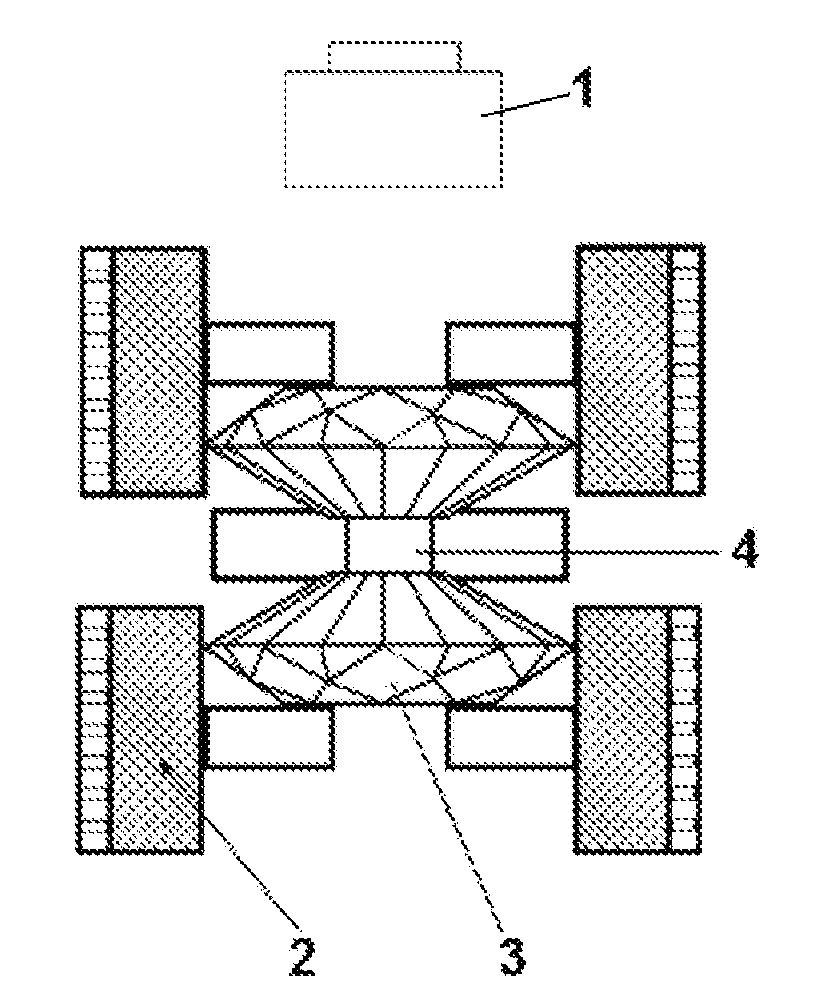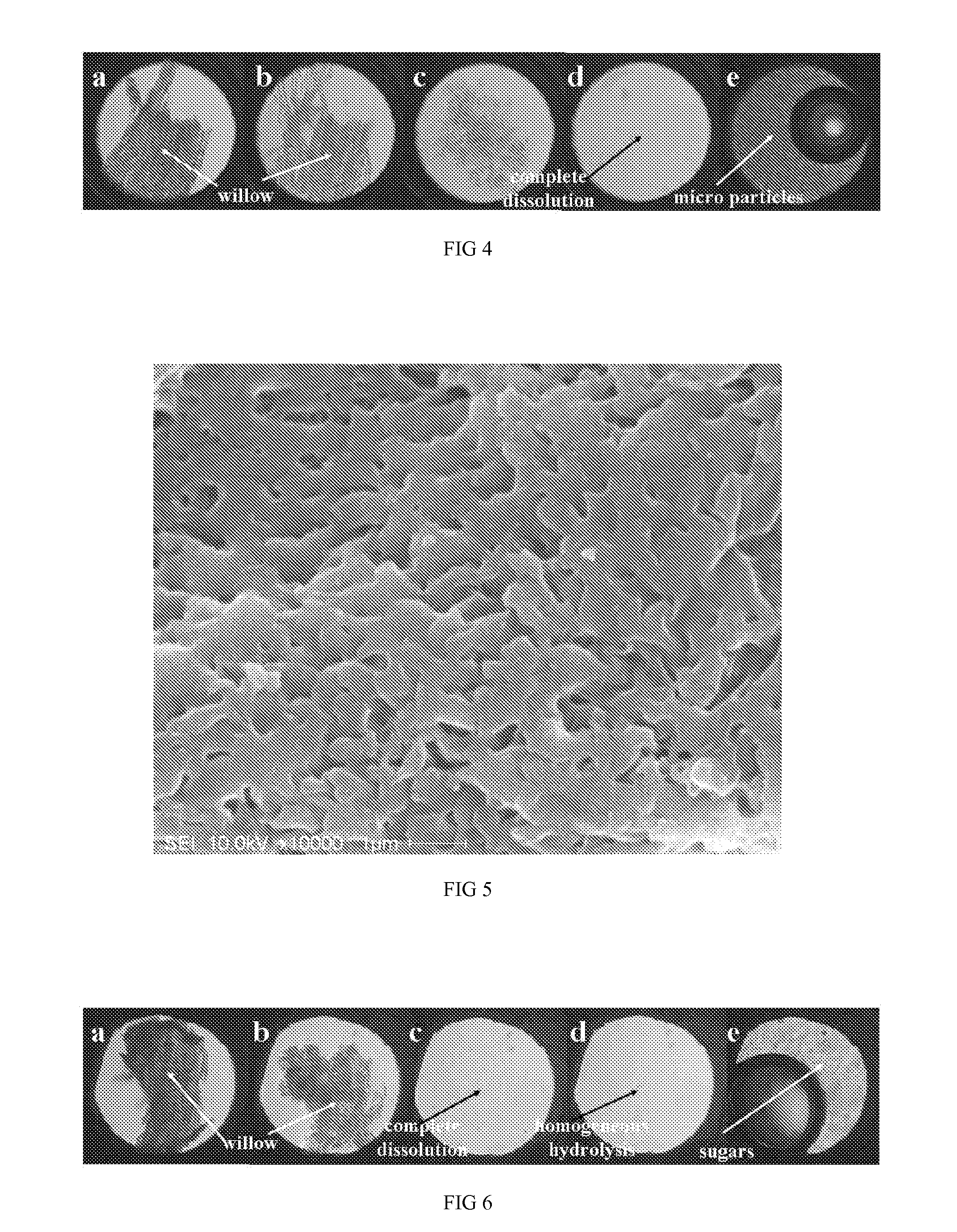Method, equipment and applications for fast complete dissolution and hydrolysis of lignocellulosic biomass
a technology of lignocellulosic biomass and hydrolysis method, which is applied in the field of biomass processing technology, can solve the problems of secondary decomposition of sugars, inefficient and incomplete dissolution method of lignocellulosic biomass in hot water, and process needs to be cleaned periodically
- Summary
- Abstract
- Description
- Claims
- Application Information
AI Technical Summary
Benefits of technology
Problems solved by technology
Method used
Image
Examples
example 1
[0083]Willow particles are placed in 2.4 wt % Na2CO3 solution at a biomass / liquid volume ratio of 0.606 / 1, as sample 1. Pure water is heated to 365° C. as, sample 2. Sample 1 is mixed with sample 2 and fed into a reactor. In the mixture, Na2CO3 concentration is adjusted to 0.8 wt % (pH of 11.4), willow concentration to 20.2% and water density to 322 kg / m3. The mixture is rapidly heated to 365° C. (pressure of 20 MPa) at a heating rate of 14° C. / s. The willow is completely dissolved in 1.65 s. Number 1 in FIG . 9 indicates the complete dissolution temperature versus the water density in Example 1.
example 2
[0084]The process described in Example 1 is repeated here, but with the following differences: Biomass / liquid volume ratio is 0.915 / 1 and pure water is heated to 335° C. After mixing, willow concentration is 30.5% and water density is 510 kg / m3. The mixture is rapidly heated to 335° C. (pressure of 14 MPa) at a heating rate of 13° C. / s. The willow is completely dissolved in 0.93 s. Number 2 in FIG. 9 indicates the complete dissolution temperature versus the water density in Example 2.
example 3
[0085]The process described in Example 1 is repeated here, but with the following differences: Biomass / liquid volume ratio is 0.975 / 1 and pure water is heated to 336° C. After mixing, willow concentration is 32.5% and water density is 528 kg / m3. The mixture is rapidly heated to 336° C. (pressure of 14 MPa) at a heating rate of 12° C. / s. The willow is completely dissolved in 1.07 s. Number 3 in FIG. 9 indicates the complete dissolution temperature versus the water density in Example 3.
PUM
| Property | Measurement | Unit |
|---|---|---|
| pressure | aaaaa | aaaaa |
| temperatures | aaaaa | aaaaa |
| temperature | aaaaa | aaaaa |
Abstract
Description
Claims
Application Information
 Login to View More
Login to View More - R&D
- Intellectual Property
- Life Sciences
- Materials
- Tech Scout
- Unparalleled Data Quality
- Higher Quality Content
- 60% Fewer Hallucinations
Browse by: Latest US Patents, China's latest patents, Technical Efficacy Thesaurus, Application Domain, Technology Topic, Popular Technical Reports.
© 2025 PatSnap. All rights reserved.Legal|Privacy policy|Modern Slavery Act Transparency Statement|Sitemap|About US| Contact US: help@patsnap.com



